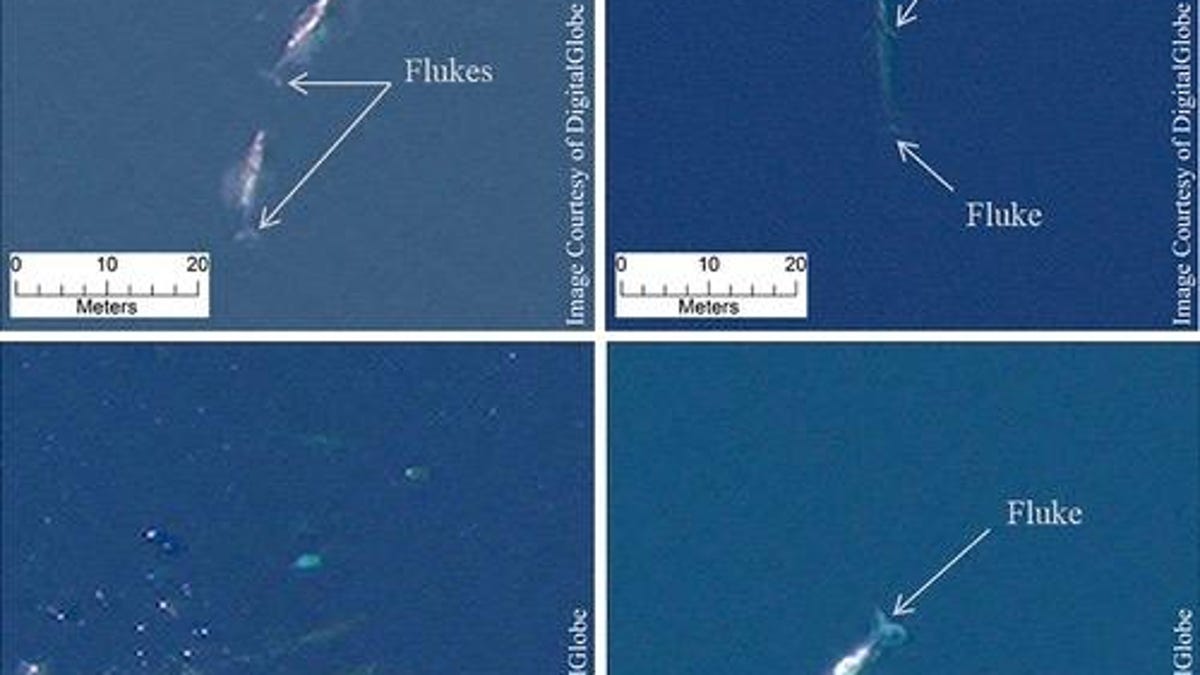Whales are surprisingly easy to spot from space
High-resolution satellite images could help scientists collect whale data in remote, inaccessible areas.
Why go whale watching on the high seas when you can see the mammals from space?
Researchers from the University of Cambridge and British Antarctic Survey used detailed, high-resolution satellite images provided by Maxar Technologies' DigitalGlobe to detect and monitor different species of whales.
Their research, just published in the journal Marine Mammal Science journal, suggests a cost-effective method for studying whales in inaccessible, hard-to-reach places where traditional tracking is limited or impractical. The technique could help other marine biologists keep tabs on whale population changes and better understand their migratory behavior.
Using very high resolution (VHR) satellite imagery, researchers found and described four different mysticete (large whale) species: fin whales (Balaenoptera physalus) in the Pelagos Sanctuary in the Mediterranean; gray whales (Eschrichtius robustus) on the coast of Mexico; humpback whales (Megaptera novaeangliae) near Hawaii; and southern right whales (Eubalaena australis) in Argentina.
Researchers were able to quickly identify both fin and gray whales (as opposed to humpback whales and southern right whales) from their unique body coloration, which contrasts with the ocean water.
Interestingly, the study reveals that some whale species are much easier to identify via satellite than traditional methods.
"This is the most detailed imagery of whales captured by satellites to date," lead study author Hannah Cubaynes, a whale ecologist from University of Cambridge, said in a British Antarctic Survey interview Thursday. "It's exciting that the improved resolution ... reveals characteristic features, such as flippers and flukes, which can be seen in the images for the first time."
Rebooting the Reef: CNET dives deep into how tech can help save Australia's Great Barrier Reef.
NASA turns 60: The space agency has taken humanity farther than anyone else, and it has plans to go further.


